This post has a lot of images and may be too big to read directly in your email. Just go to the Substack site. It might ask you to sign up, but all it wants you to do is enter your email address since you are probably already subscribed to my Substack.
There were no classes on Fridays during our semester in Rome. Every weekend was a three-day weekend, both for me and my students. The students traveled all over Europe, leaving almost every weekend to visit Greece, Spain, Austria, Germany (for Oktoberfest, of course), Malta, Ireland, the UK and so on. Collectively, they visited at least 15 countries.
I decided at the beginning of the semester that I was not going to leave Italy, and I kept that promise – or almost. I did visit San Marino, a microstate that is completely surrounded by Italy. I focused on seeing the provinces of Italy that I had not already visited through woofing and by the end of the semester, I had been to 17 of Italy’s 20 regions. The ones I am still missing are Sardinia, the Aosta Valley, and Friuli-Venezia Guilia.
The first weekend trip I took was to Bologna, in late September, and I loved it. It may be my favorite Italian city. I suppose that makes sense, since it is Italy’s capital of gastronomy – most of my readers already know how much I love food. The city is also home to the oldest university in Europe: the University of Bologna, founded in 1088. It is very much a university town – there are students everywhere, and more cultural events than anyone could possibly attend. In Italy, Bologna is known as “La dotta, la grassa e la rossa,” which means the learned one (for its university culture), the fat one (for the food), and the red one, for the 350 shades of red brick in its buildings and its red terra cotta rooftops.
I spent three nights and three and a half days in Bologna and it was not nearly enough. I told Christian that I want us to spend at least four months living there after we retire.
The trip did not start out well. I had purchased train tickets ahead of time, but didn’t pay close enough attention to the details. I arrived at Termini station (Rome’s central rail station) a half hour in advance, and could not find details for my train posted anywhere. Looking more carefully at my ticket, I saw that it was scheduled to leave from the Tiburtina station, on the outskirts of Rome, in 20 minutes. Distressingly, this is not the first (or second or third or fourth) time that I’ve gone to the wrong train station or the wrong airport.
Tiburtina is 40 minutes from Termini by metro, 25 by taxi. I’ll never make it. I did see that there was another train heading for Milan leaving Termini in five minutes, stopping at Tiburtina ten minutes later. I begged the controllers (in Italian) to let me use that for my connection but they responded with a very firm no.
I had to buy another ticket, and would end up arriving in Bologna four hours later than planned. Good think I didn’t have lunch reservations. I was too frustrated to use the wasted time grading and worked on my Italian instead, reading the Harlequin romance that I found for free on a bookshelf in Naples. The plot is entirely predictable, which makes reading comprehension easier. Plus, I learn a lot of interesting vocabulary that doesn’t come up in everyday conversation.
I arrived at Bologna Centrale train station and walked 15 minutes to the center of the city to drop off my suitcase and backpack. It was early afternoon and I was hungry. I made good use of my strategy of noticing where other people are lining up for food and joining them. The place was called, MO! Mortadella, a tiny sandwich shop with no seating (people were eating their sandwiches standing on the street) showcasing mortadella, a food that is famously from Bologna.
The American version of mortadella is called boloney: yes, the Oscar Meyer kind. But the original is so much better. AOP (certified) mortadella is made with only four ingredients: pork meat, fat, salt, and pepper. The meat is defined as striated muscle – so not just any pork product, but cuts that could be sold as roasts, chops, and so on. The fat usually comes from the neck – it is hard and remains as lighter colored flecks in the final product.
The Mortadella Lab offered 7 different kinds of mortadella, including a Sicilian version with part donkey meat, a wild boar version, and regular (Black Sicilian pork) mortadella with or without truffles. The sandwich I had was amazing: warm bread with (regular) mortadella, mozzarella di bufala, arugula, and cherry tomatoes.
Mortadella is just one of the signature food products of Emilia Romagna, the region that includes Bologna, Parma, Modena, and many smaller cities. The region extends across most of north central Italy, from the Apennine mountains to the Adriatic sea with the famous beaches and nightlife of Rimini. Historically and today, it is a rich region in Italy, with excellent conditions for agriculture and manufacturing – including Ferrari, Lamborghini, and Ducati. Many of Italy’s most iconic foods come from Emilia Romagna, including the original parmesan (Parmeggiano Regianno, from Parma), balsamic vinegar (from Modena), and the famous Prosciutto di Parma. And on top of all of that, Bologna is famous for fresh pasta, and is said to have the best in Italy.
I had three pasta dishes of my list to eat in Bologna: lasagna, tagliatelle with ragu (the original and authentic version of spaghetti bolognaise), and tortellini in brodo – tiny filled, hand-made morsels the size of a finger-tip, traditionally served in broth. Its origin story tells about an innkeeper in Emiglia Romano who spied through the keyhole on one of his female guests, who turned out to be the goddess Venus. The shape of the tortellini was inspired by her perfect navel.
Souvenir magnets for sale: mortadella, tortellini, porticos and towersI found the recipe for authentic tortellini in the window display of one of the many gourmet food shops that sell it package as a souvenir, next to a photo of a box of their tortellini being hand delivered to Pope Francis.
Don’t worry, I verified later through research that this really is the traditional recipe for the filling to serve 6 people:
100 grams of pork loin, sauteed in butter until just cooked (pink in the middle)
100 grams of AOP Mortadella di Bologna
100 grams of prosciutto
150 grams of Parmigiano Reggiano
1 egg
Sprinkle of grated nutmeg (1/3 gram)
The tortellini are served fresh, made that day or the day before, and traditionally in a capon broth. A capon is a castrated rooster, allowed to grow to a large size. It’s often used instead of turkey for the Christmas Day meal in France.
I wandered the streets and took photos while waiting for the small restaurant famous for its tortellini to open for dinner. The center of the city is a rough hexagon with a diameter of about 1.5 miles. You can cross from any side to the other in a 35 minute walk. There is a much larger urban area outside of this, but many people live in the center without needing to leave it very often. The university is here, along with stores, restaurants, services, apartments buildings, and even some houses. There is a very strong bicycle culture, helped by the fact that the city is mostly flat.
The city is beautiful: shades of red, orange, and yellow on the buildings, and porticos everywhere. Extending for 40 kilometers (25 miles) inside the city center (and more outside the center), the Porticos of Bologna are a UNESCO world heritage site. They began as a form of tax evasion: buildings in the Middle Ages were taxed based on the size of their ground floor footprint, so almost everyone built a second floor that was larger than the first, extending into the street. Many of the medieval parts of French cities are full of buildings like these:
Apparently in Bologna, people extended these overhangs so far that they needed columns to support them. As the city became more crowded with the influx of university students and artisans, city officials came up with a creative solution. In 1288, the Municipality decreed that all new houses must be built with a portico while existing houses were required to add one. The resulting covered spaces had to be maintained by the property owner, but were defined as public spaces that the city controlled, to be used for artisan workshops and commercial activities.
Today the porticos are part of the charm of Bologna and they make it an exceptionally walkable city. There is always shade, shelter from the rain, and an amazing array of easily accessible small businesses. I walked through this one on the way to my restaurant:
I ordered the tortellini in brodo, which is a first course, and said I would decide later whether to order a second. I’m glad that I did it that way because the bowl was bigger than expected. The tortellini were truly delicious: the filling inside is a tiny amount, the size of a pencil eraser, but so packed with umami that it creates a flavor explosion in your mouth. The broth was also delicious, but since I’ve been making my own chicken broth regularly now for a decade I think mine is slightly better.
I was too full for a second course but I decided that I still had room for gelato. There’s almost always room for gelato. I tried a place called Oggi that looked promising, and discovered my new favorite flavor. They call it Pulcinella, “The taste of the most beautiful island,” by which they mean Sicily. The base is ricotta, with flakes of dark chocolate made in Modica (where the girls and I visited a traditional chocolate maker in 2019) and orange zest. For me, the slight sourness of the ricotta made it perfect.
I wandered the streets more, taking some photos of the central square by night.
I stumbled into an area just to the east of the main square that was absolutely packed with people enjoying the apperativo on tables filling the streets and resolved to come back myself the next evening.
I walked another hour, and the streets everywhere in the city center were by then full of people eating dinner. I have never seen so many thousands of people eating outside in the evening and it made me love Bologna even more.
This post is already quite long and I’ve only covered one of my three days in Bologna.
Up next: an amazingly photogenic market, a tale of two towers, and two more restaurant meals.
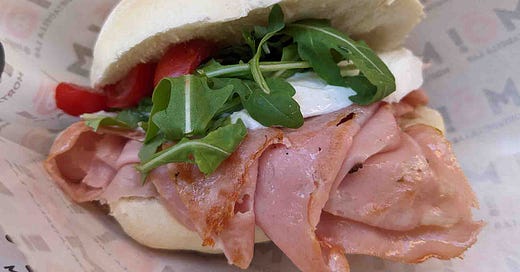


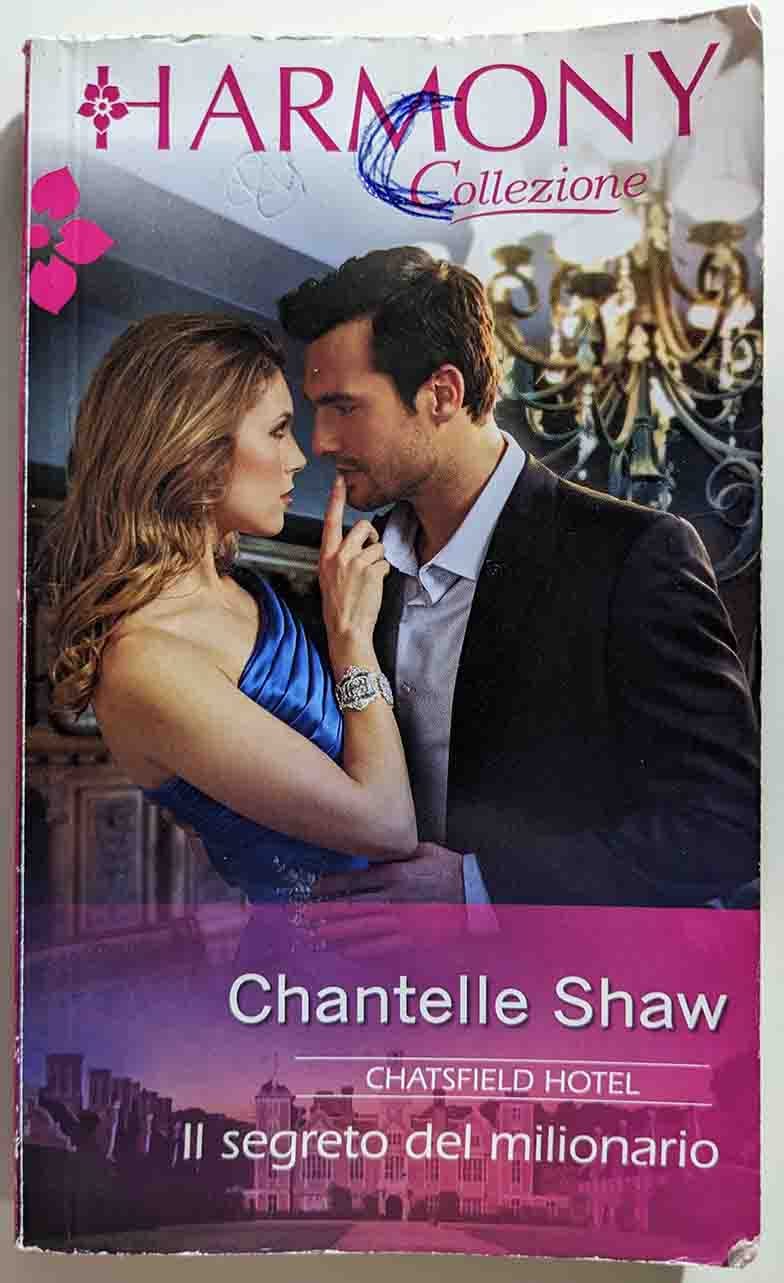
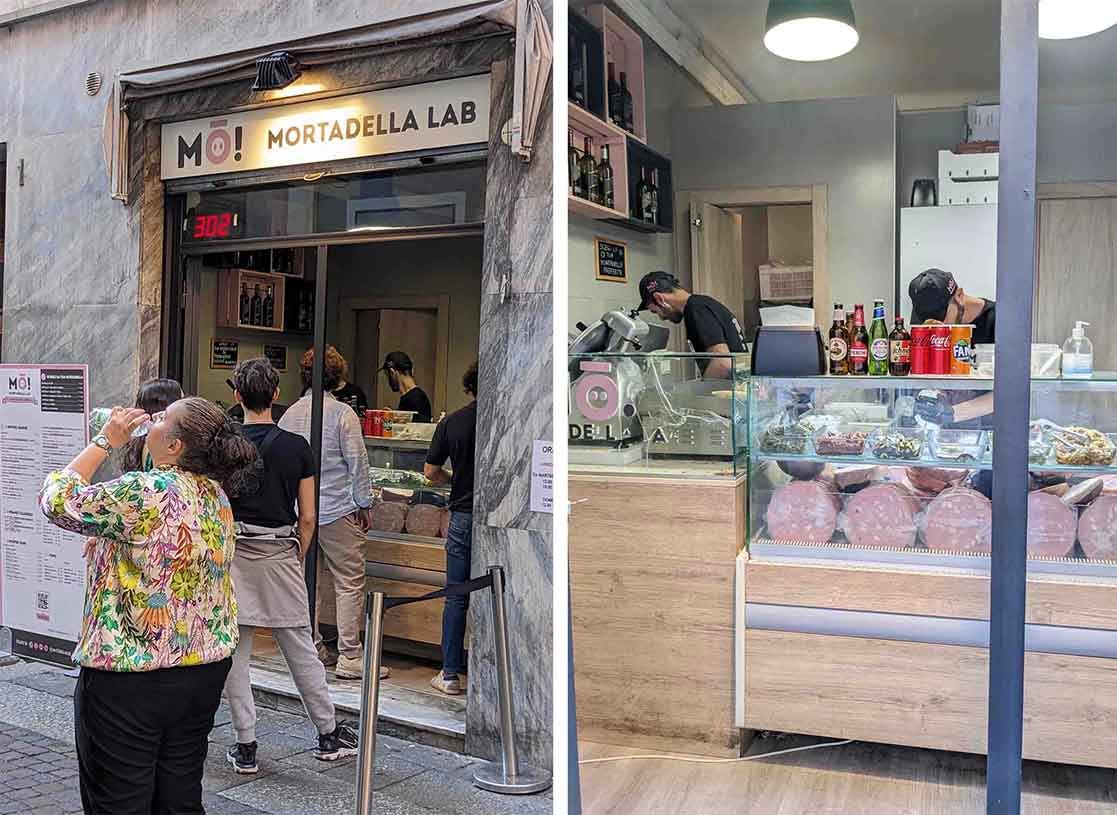


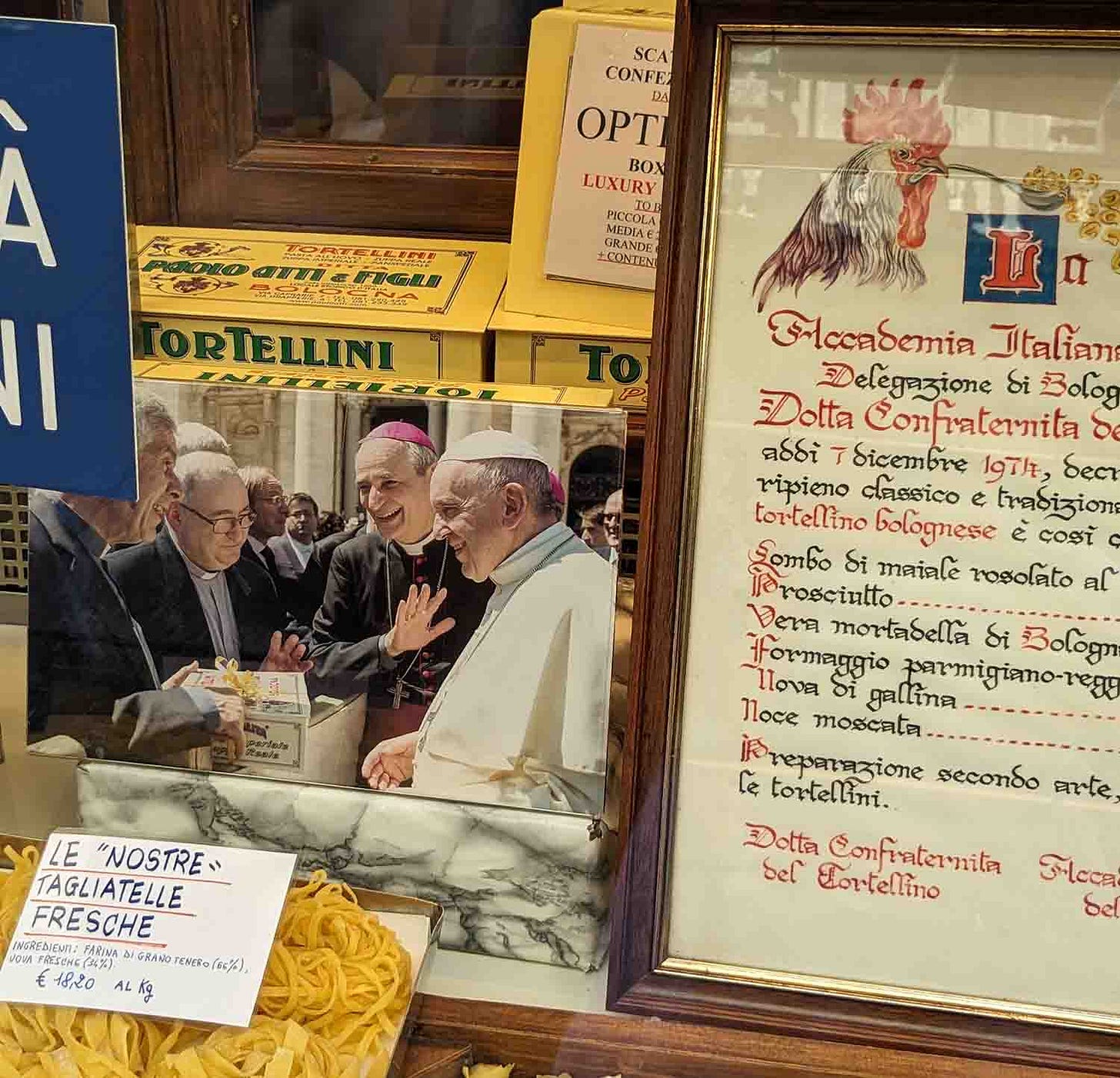
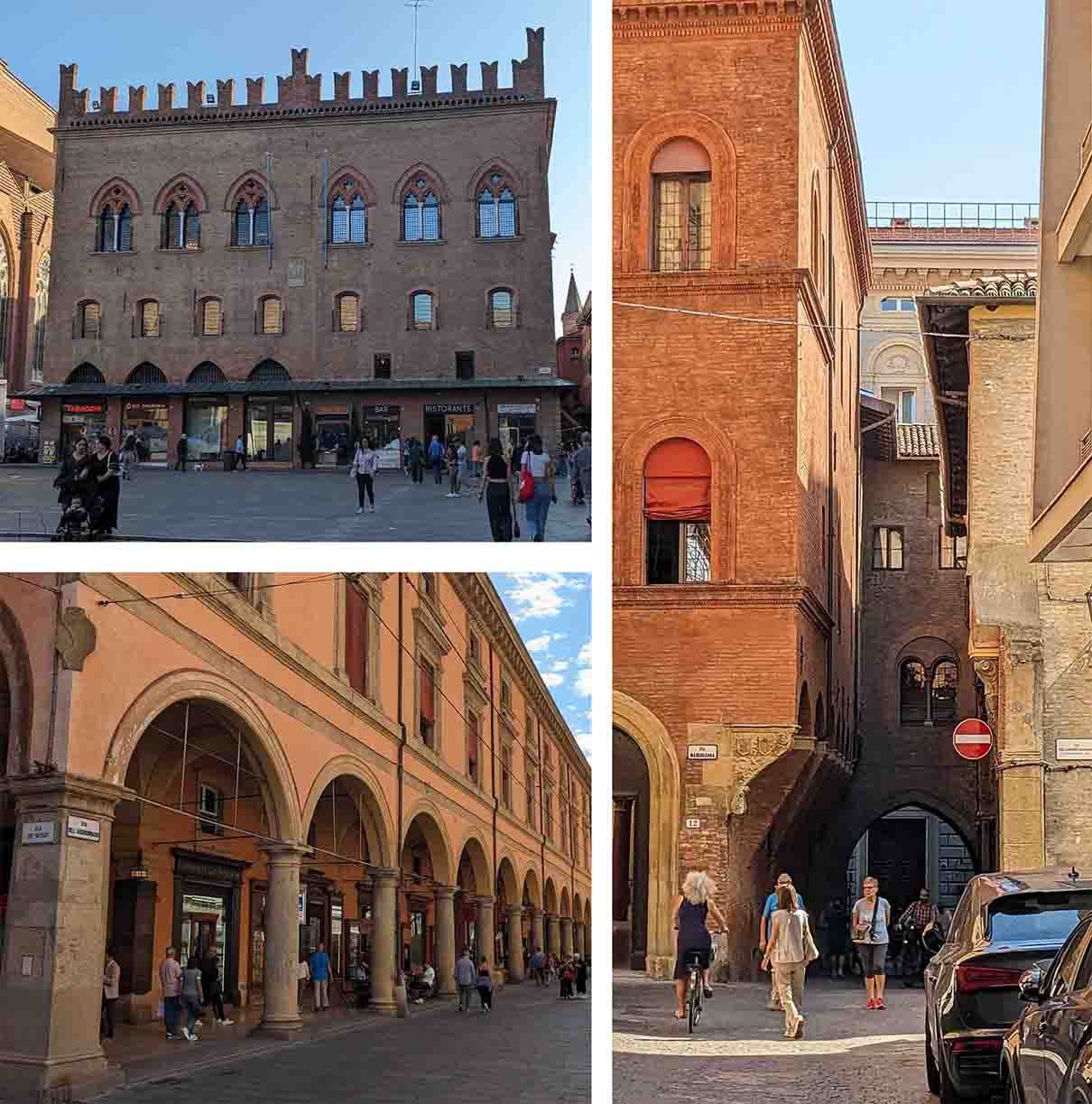
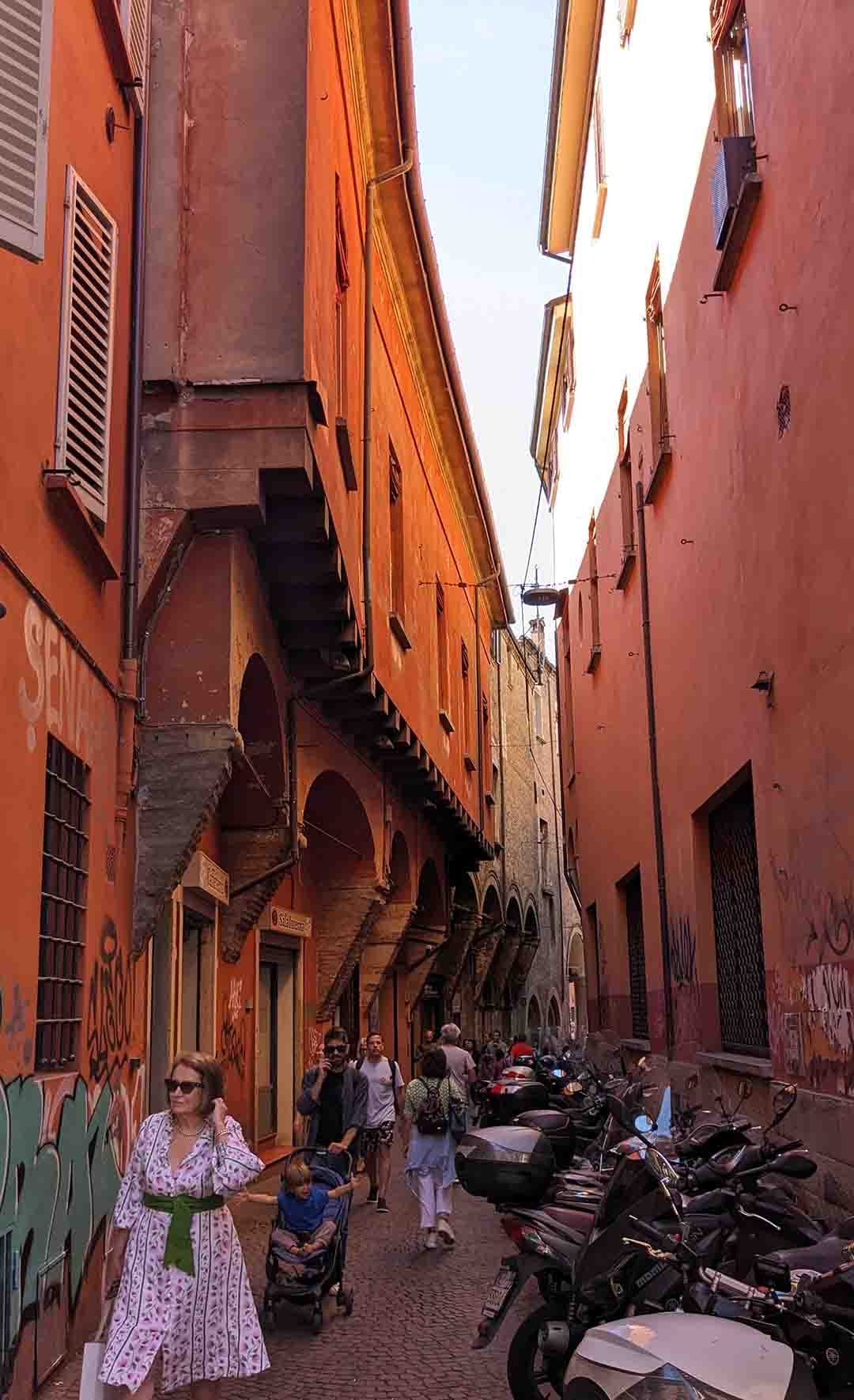
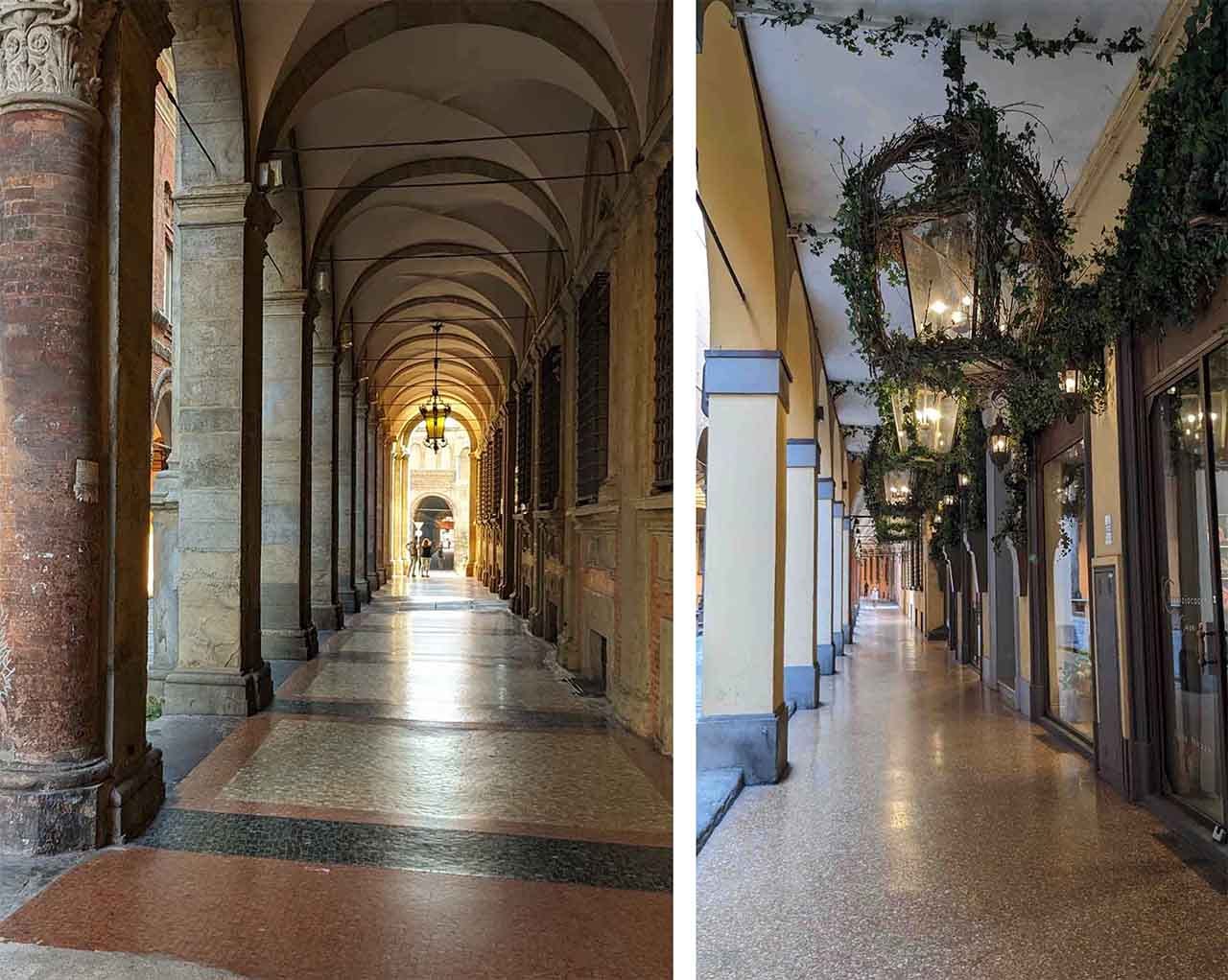
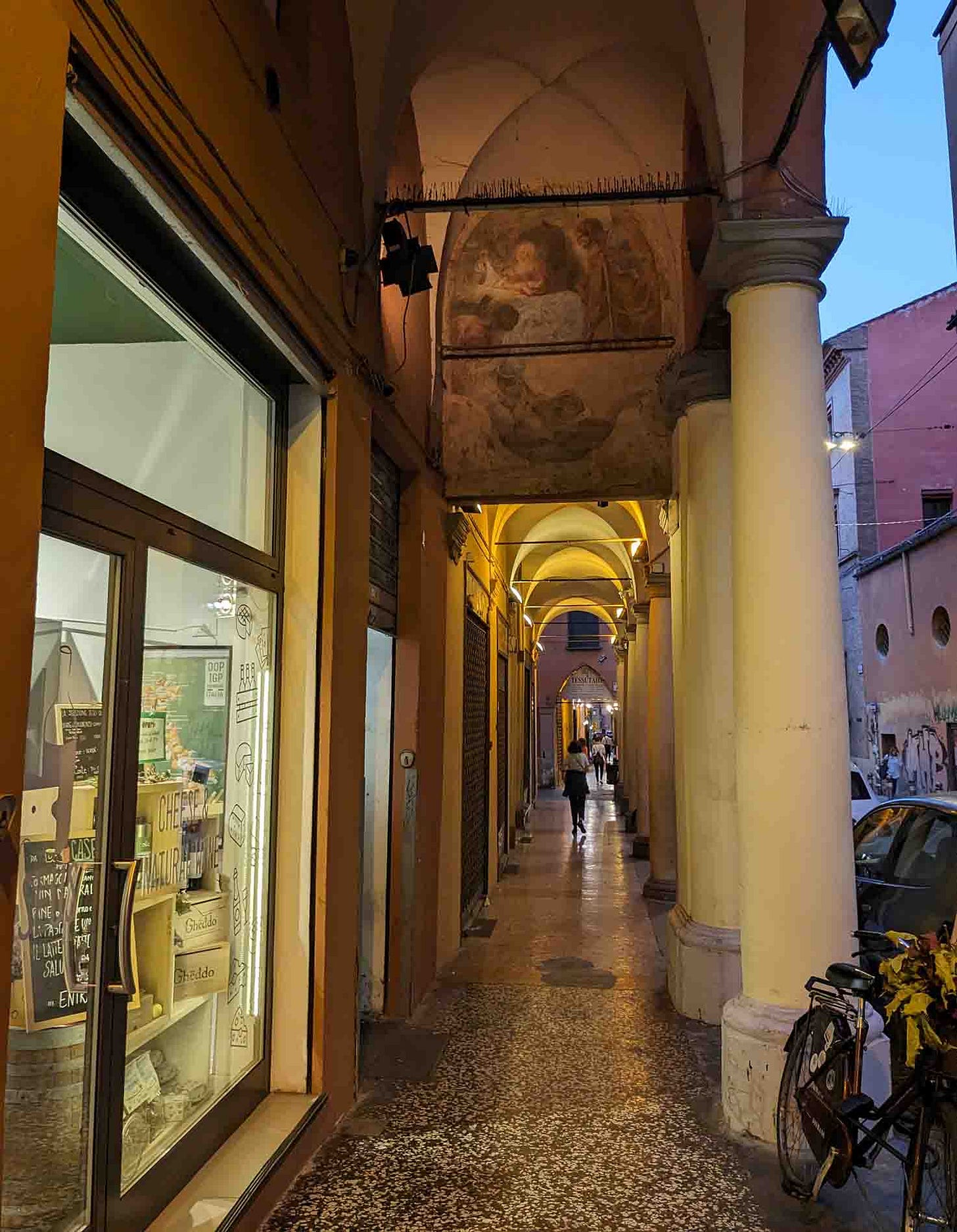

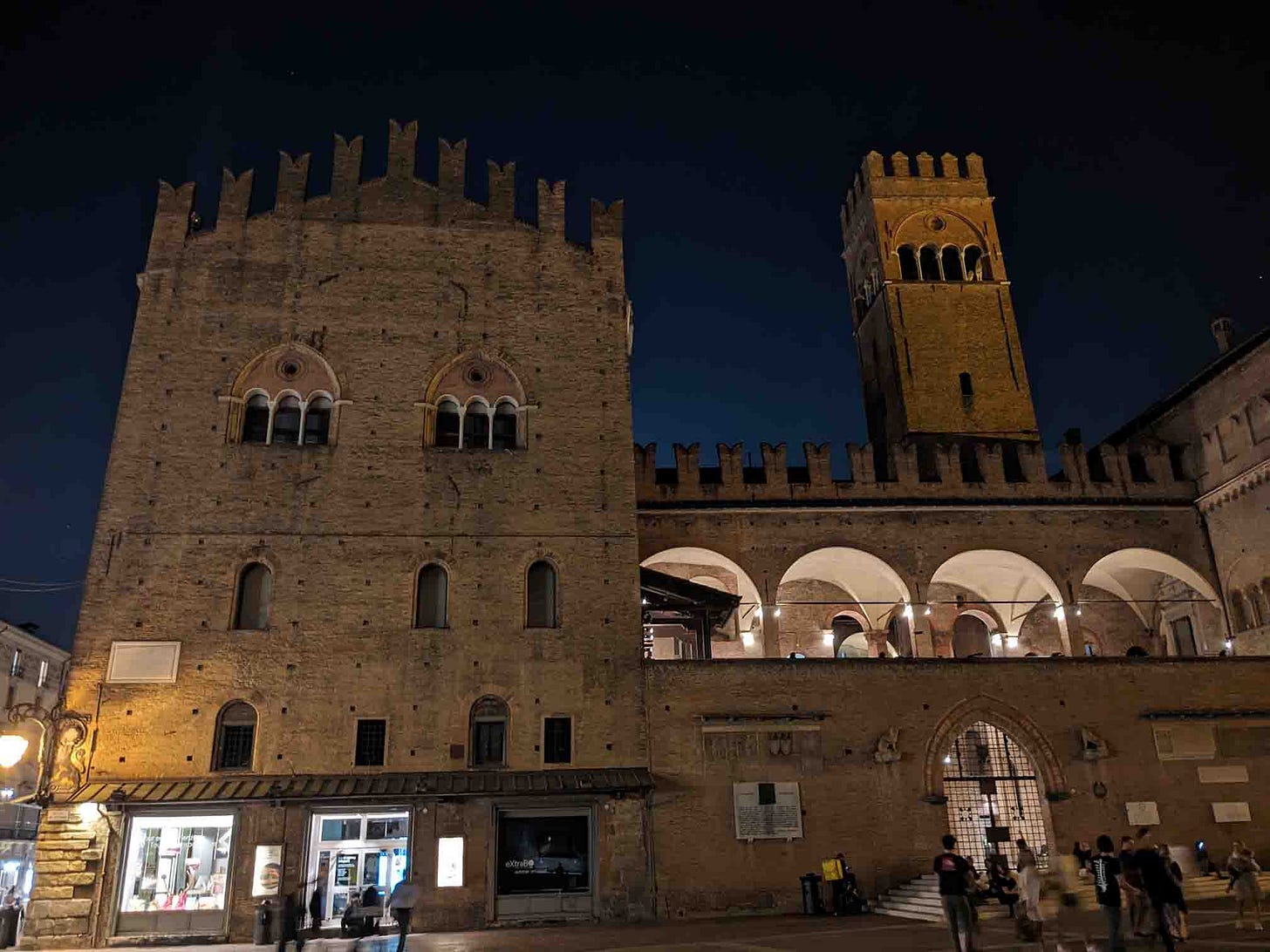

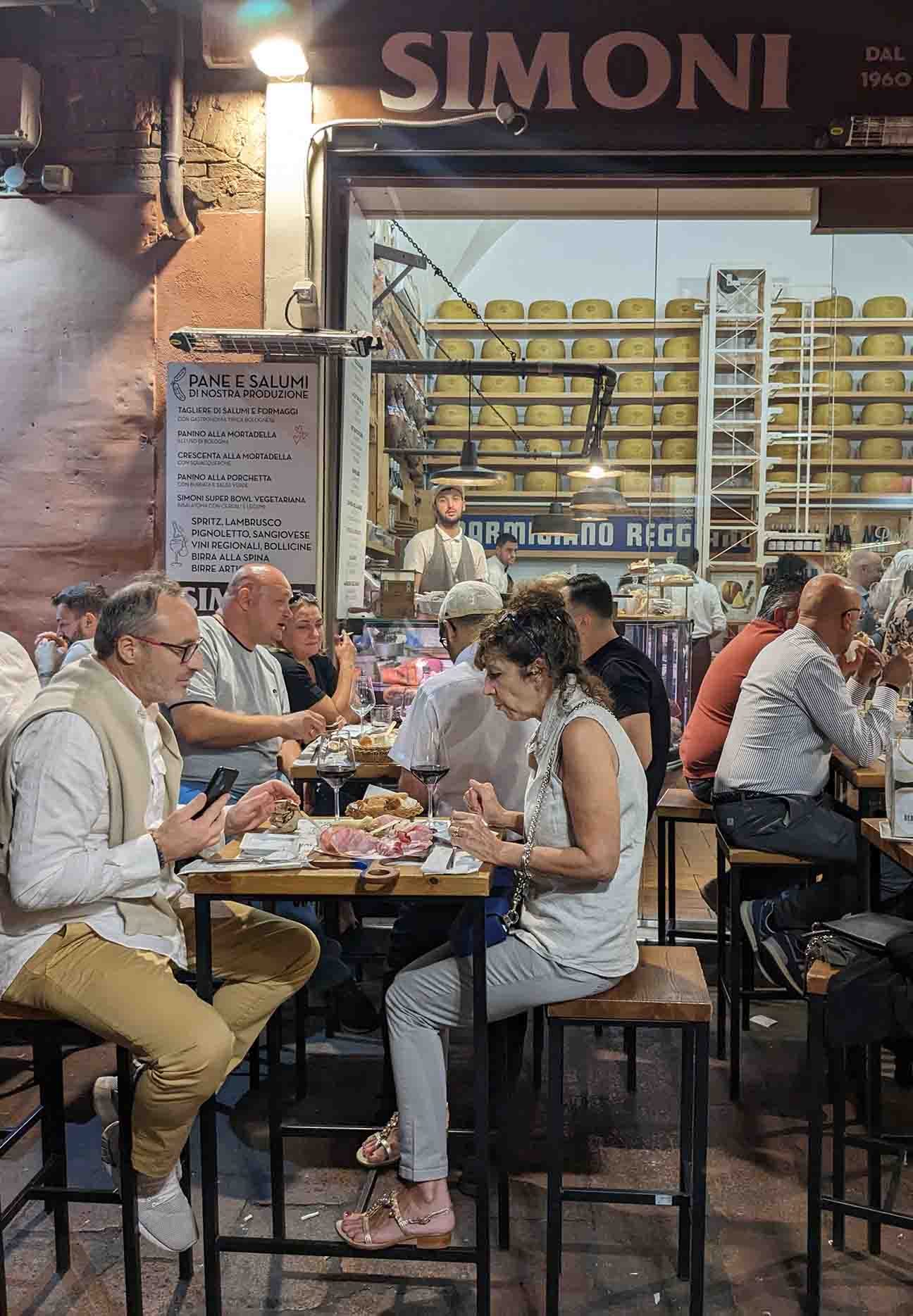
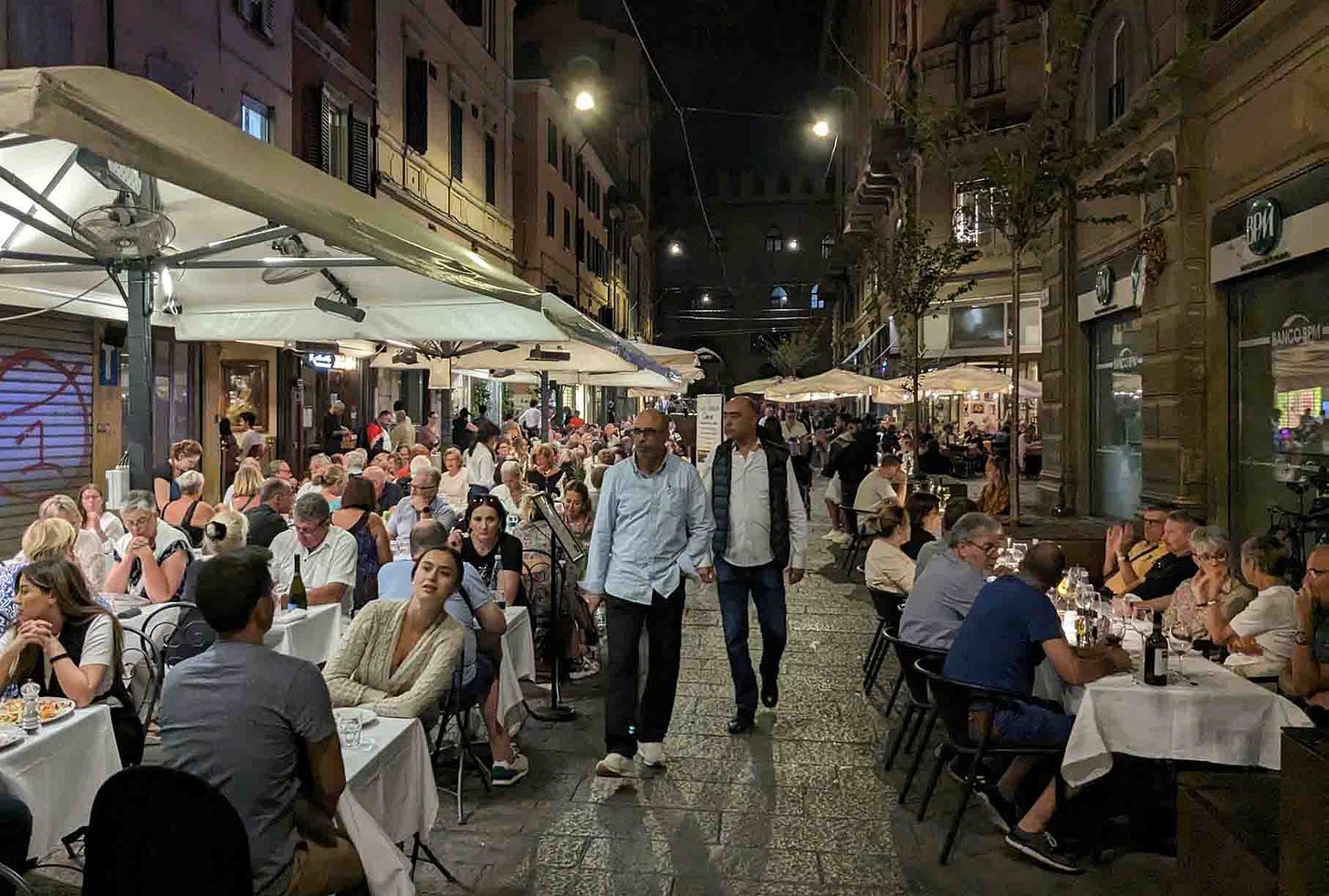
Great descriptions, almost like being there!